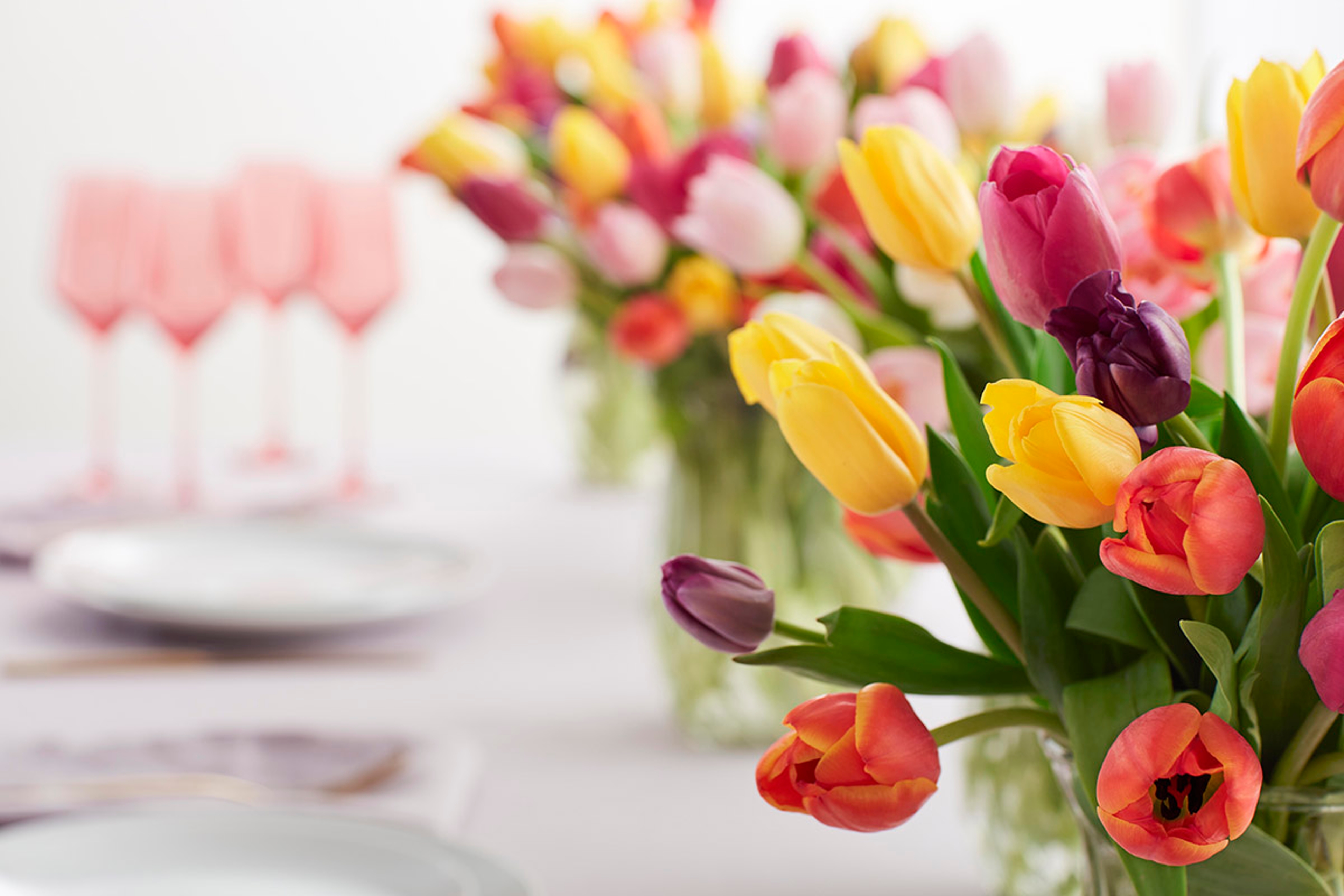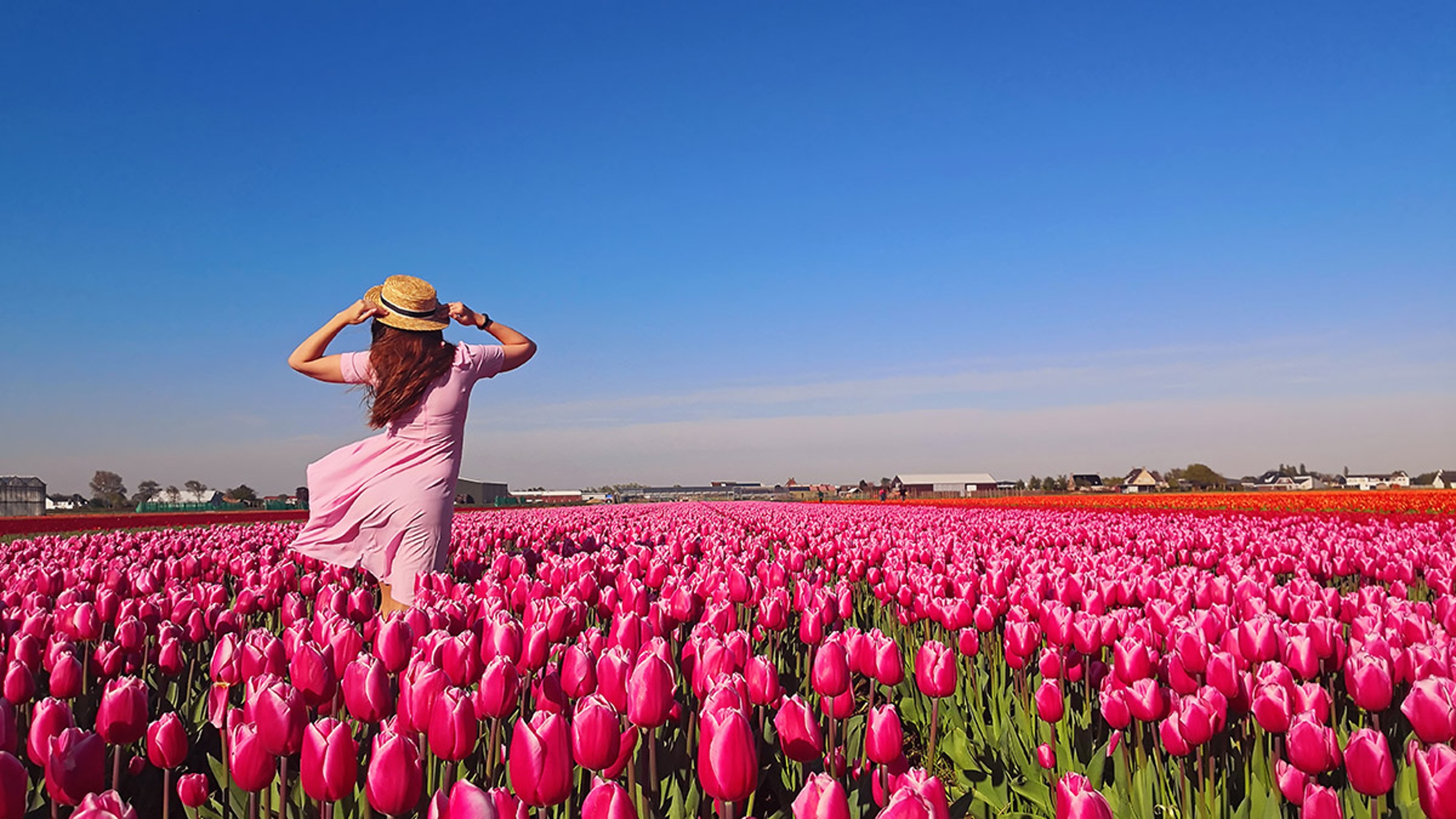10 Fun Facts About Tulips
Tulips are brightly colored and showy, but how much do you actually know about these springtime flowers?
Mar 09, 2022
he name “tulip" is derived from the Persian word delband, meaning “turban." There are two possible stories as to the origin. The first asserts that the word comes from the actual shape of the tulip flower, which is reminiscent of a turban. The second story speculates that it was popular to wear this flower in one's turban, which led to a translation error by historians.
Here are 10 more fascinating tulip facts.
1. Tulips are native to Central Asia
Tulips are wildflowers native to central Asia in the Tien Shan Mountains near the Russian-Chinese border. They spread west and were cultivated in the Ottoman Empire (modern-day Turkey) by 1000 A.D., when the sultans introduced huge beds of tulips to parks and palace gardens.
2. The tulip industry got its start in Holland
In the 1500s, Carolus Clusius, a botanist at the University of Leiden in the Netherlands, received some tulip bulbs from the ambassador to the sultan. Clusius grew the plants in his private collection, but he would not share his bulbs or sell them. As a result, the gardens were repeatedly raided and the bulbs sold. Holland’s tulip industry was born.
3. Tulip Mania is one of the most famous market crashes of all time
As the popularity of tulips in Holland grew, the bulbs’ value increased. They were considered a rarity and commanded an enormous price that only the wealthy could afford. There was a rush on tulip bulbs from 1634 to 1637 as speculators bought them hoping to sell at a high price. Many did during Tulip Mania, or the tulip craze, but in 1637 too many speculators sold at once and the tulip market crashed, ending this brief but memorable period.
4. Holland is still the largest producer of tulips
Tulip Mania ended in 1637, but the fascination with tulips was deeply rooted and grew into a huge commercial enterprise. Today, Holland is the largest producer of tulips worldwide, exporting about 3 billion bulbs per year.

5. Each color tulip carries its own significance
Generally, tulips symbolize love, but there is a different meaning based on the color of tulip in question. For love and romance, red tulips are the way to go. If you want to convey an apology, white tulips are the flowers that you seek. Purple tulips are associated with royalty, while yellow tulips are great for cheer and happiness.
6. Striped tulips were originally created from a virus
Tulips come in many solid colors, but there are striped ones, too. These unusual tulips were greatly prized and sold for a high price since the 1600s, but in 1931, scientists discovered that the coloring was caused by a virus spread by aphids (sap-sucking insects). Today, this coloring is reproduced artificially. The virus is still used to alter the DNA, but it's done without aphids.
7. Tulips inspired many forms of art
Islamic art has featured tulips since the time of the sultans. Elsewhere, German painter Jacob Marrel created a book of paintings to market the different tulip varieties. His work inspired designs on textiles and furniture. The flowers were also seen in still-life paintings of the Dutch Old Masters during the 1600s. In the mid-1800s, tulips were a favorite subject in the Arts and Crafts movement, and Tiffany tulip lamps were produced in the late 1800s.
8. The word 'tulip' comes from a Persian word meaning 'turban'
The word “tulip” comes from the graceful shape of the flower and the bulb that inspired the word “tülbend,” a Turkish pronunciation of the Persian word “dulband,” which means turban.

9. Keukenhof is the largest tulip garden in the world
Keukenhof in Holland is one of the largest gardens in the world. It's home to the largest tulip garden, where over 7 million tulips bloom in April and May.
10. There are thousands of varieties of tulips
Over 3,500 named varieties of tulips exist today, and they are organized into 15 groups.
Single early: Short tulips with large, round flowers
Double early: Double-flowered and larger than the single early group
Triumph: Sturdy, mid-season tulips of varying shapes
Darwin hybrid: Large-flowered tulips on tall stems
Single late group: Small, rounded flowers on stiff stems
Lily-flowered: Mid-season, tall-stemmed, graceful flowers that flare outward
Fringed: Petals with fringed edges that are mid- to late-flowering
Viridiflora: Late-blooming, green flowers
Rembrandt: “Broken” tulips that are striped due to the tulips breaking virus
Parrot: Late-flowering tulips with interesting, distorted petals
Double late: Tall, with rounded, late-blooming flowers
Kaufmanninana: Early flowering tulips that open flat
Fosteriana: Early flowering tulips with large flowers
Greigii: Early flowering tulips with large striped flowers on short stems
Miscellaneous: Varieties that don’t fit into the other groups







